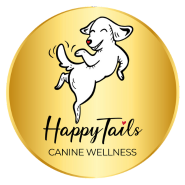G.D. Sunvold, Ph.D.
Is adding yeast to a pet’s food or supplement bad? Does it somehow harm the pet?
Uses of Yeast in Food
Yeast has been used for millennia to make human foods such as breads, beer, and wine. Because of its savory flavors, yeast and yeast derivatives are used to flavor foods. Further, yeast or its derivatives are used in topical skin applications such as moisturizers.
The Controversy
Some yeast can present a formidable infection source in humans. Commonly referred to as a “yeast infection,” many humans, especially women, suffer from urinary tract infections related to certain yeasts. The yeasts that cause these infections are generally regarded as pathogens. A common example of a pathogenic yeast is Candida. Candida yeast can infect not only the urinary tract but also skin (e.g., ringworm) and throat (e.g., thrush).
Differences in Yeast Strains
So why does yeast or yeast derivatives get added to pet foods, treats, or supplements? Because there are certain yeasts that do not cause infection and can provide health benefits.
The Benefits
Saccharomyces cerevisiae is a common food-based yeast source used in the making of bread (i.e., enabling it to rise) and fermenting of barley and hops into beer and grapes into wine. Scientists have discovered certain components of yeast such as Saccharomyces to be flavor enhancing. These flavors are savory or meat-like in taste, making the yeast an ideal flavor enhancing ingredient for pets as well as humans.
Yeast are a single cell organism. Yeast are typically about ten times larger than bacteria. The outer membrane of a yeast cell is called a “wall.” The cell wall of a yeast provides structural integrity to the yeast cell. Within the cell wall are components such as mannanoligosaccharides (MOS) and beta-glucans, both of which are highly beneficial to humans and pets.
Mannanoligosaccharides
The ability of any micro-organism to have an effect on its host is dependent on its ability to become a resident organism of the host (e.g., throat, gut, ears, etc.). Resident organisms typically are able to bind onto the host tissues, thus establishing their resident status. Micro-organisms such as pathogenic yeast or bacteria outcompete otherwise health-enhancing microbes. Beneficial yeast contain cell wall components such as MOS that can “trick” pathogenic bacteria by providing a binding site that these pathogens adhere to rather than the intestinal lining. As a result, MOS helps flush bad bacteria out of the intestine.
Beta Glucans
The beneficial effects of certain yeasts’ cell wall components are further demonstrated by beta-glucans (BG). These carbohydrate structures are known to influence gut immunity. The intestinal lining of the gut is integrated with lymph tissue. This lymph tissue serves as a training ground for immune cells. There are dozens of different types of immune cells that are developed as a response to immune enhancing substances such as beta-glucans.
Summary
Yeast strains differ in their effects on the host. While some pathogenic yeast are detrimental to dog health, as with human foods, there are many potential benefits of other strains of yeast and the products of yeast. Whether it be baked or fermented foods and drinks or yeast extracts rich in MOS and beta-glucans, healthy yeast sources can be health enhancing to the host consuming them.
Sample block quote
Praesent vestibulum congue tellus at fringilla. Curabitur vitae semper sem, eu convallis est. Cras felis nunc commodo eu convallis vitae interdum non nisl. Maecenas ac est sit amet augue pharetra convallis nec danos dui.
Sample lookbook gallery
Sample paragraph text
Cras suscipit quam et turpis eleifend vitae malesuada magna congue. Damus id ullamcorper neque. Sed vitae mid a cosmo pretium aliquet an sedo delitos. Pellentesque nulla eros accumsan quis justo at tincidunt lobortis denimes loremous. Suspendisse vestibulum lectus in lectus volutpat, ut dapibus purus pulvinar. Vestibulum sit amet auctor ipsum. Proin molestie egestas orci ac suscipit risus posuere loremous.




